Monitoring CSA performance and outcomes in the Climate-Smart Villages: Ready… set, go!
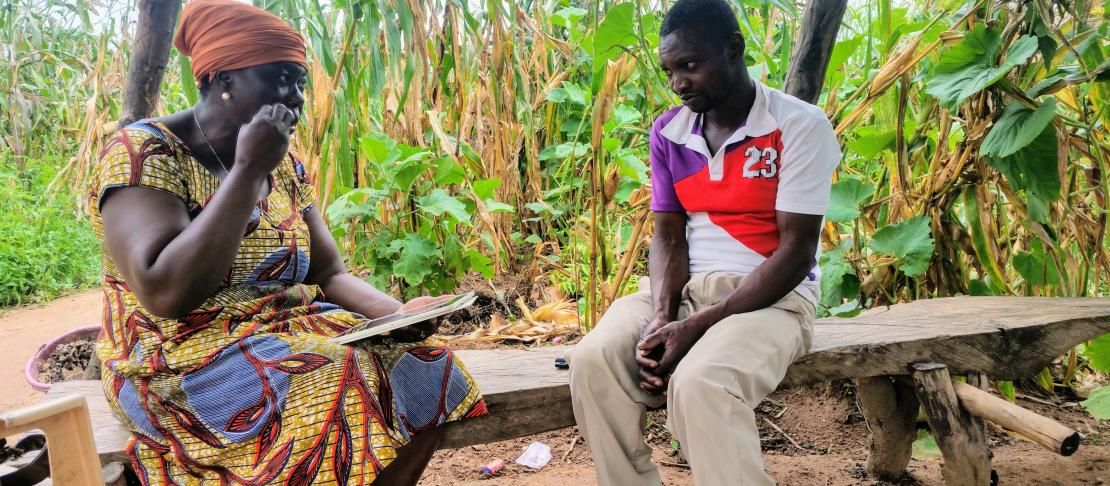
After months of work and a three day long journey, the D-day arrived and the CCAFS Climate-Smart Village Monitoring team stepped into the field in the Doggoh village in Ghana.
It is almost the end of both the rainy and cropping season when three scientists from Colombia and the Climate-Smart Village (CSV) coordinator of West Africa reached the districts of Lawra and Jirapa in the Guinea Savanna in the Ghana agro-ecological zone. Their aim was to carry out the first comprehensive trial of the freshly developed multi-scale CSV Monitoring Plan.
Designed over the last months, the CSV Monitoring Plan intends to be a robust, cost-effective ICT-based instrument that provides standard CSA metrics and can be rapid, reliably and systematically deployed across the whole Climate-Smart Villages network to gather annual evidence on:
- CSA options performance and outcomes at farm and household level, and
- CSA adoption trends and enabling/limiting factors within the CSV community
Since 2012, the CCAFS participatory action research activities carried out in the Lawra-Jirapa CSV have focused on identifying and evaluating locally relevant portfolios of CSA options to help smallholder farmers overcome the challenges imposed by frequent droughts, erratic rainfall patterns and increasing problems of low soil fertility. These options include the provision of climate information for improved decision-making as well as the testing and evaluation of improved practices (e.g. tied-ridging, crop-rotation maize/cowpea, earth bunding, composting, no-tillage and fertilizer deep placement application) and new technologies (e.g drought-tolerant or early maturing maize, sorghum, groundnut and soybean varieties among women groups to enhance nutrition) which have already demonstrated very positive impacts in terms of improved food security and livelihoods. But, to what extent are these happening? Which practices are working best? How are they responding to climate shocks? Are they enhancing farmers' productivity and incomes, food security or adaptive capacity? Are all members of the community perceiving the same benefits? These are precisely some questions the CSV monitoring will successfully allow to answer.
CSV Monitoring objectives
The main goal of this piloting exercise was to test in field conditions of the CSV Monitoring system and collect data focusing on assessing three aspects:

The following data collection instruments were used:
- Conventional surveys with a sample of 60 farmers currently testing CSA practices and able to quantify their inputs and yields to assess farm CSA performance using the “CSA Farm Calculator Tool”.
- The Smart Monitoring App applied to 200 households to assess farmer’s perceived effects of CSA implementation on their livelihoods and community adoptions trends. Based on a principle of simplicity in structure and design, the app is made of short sets of survey questions covering 5 thematic modules (Climate shocks, Climate services, Livelihood security & financial services, Food security and Climate-smart options). It is then presented as a friendly ICT-based application usable on tablets or smartphones. This instrument will also be critical in informing future prioritization, promotion and scaling up of the most promising, locally and socially relevant CSA options.
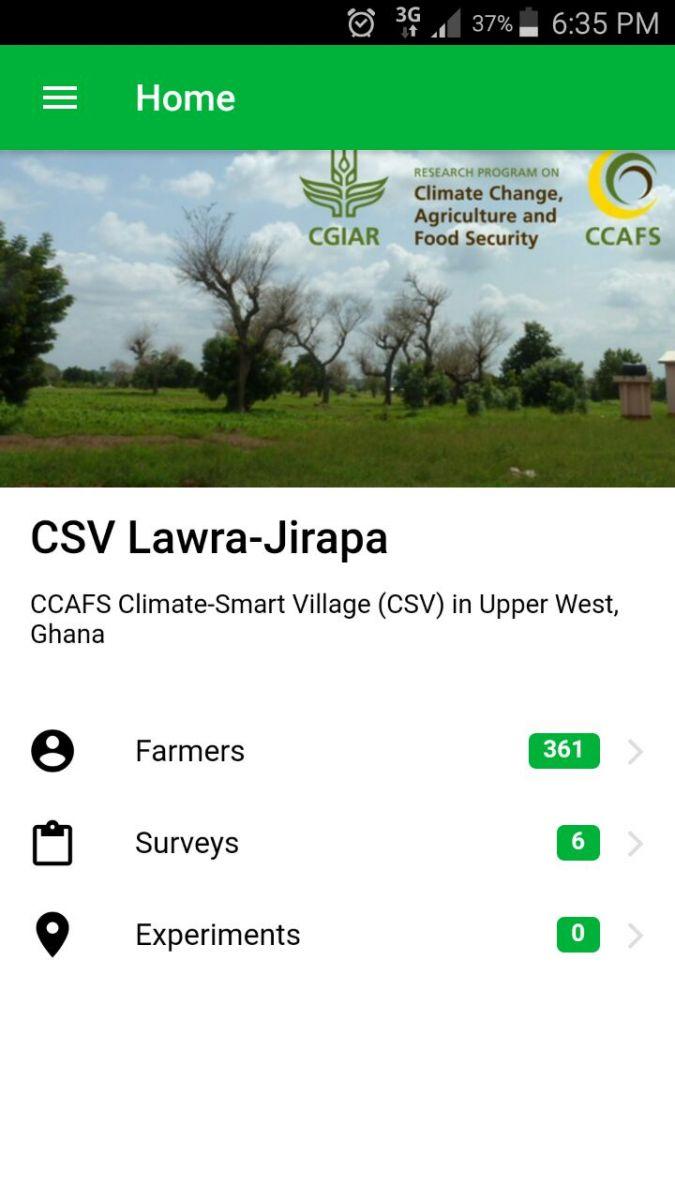
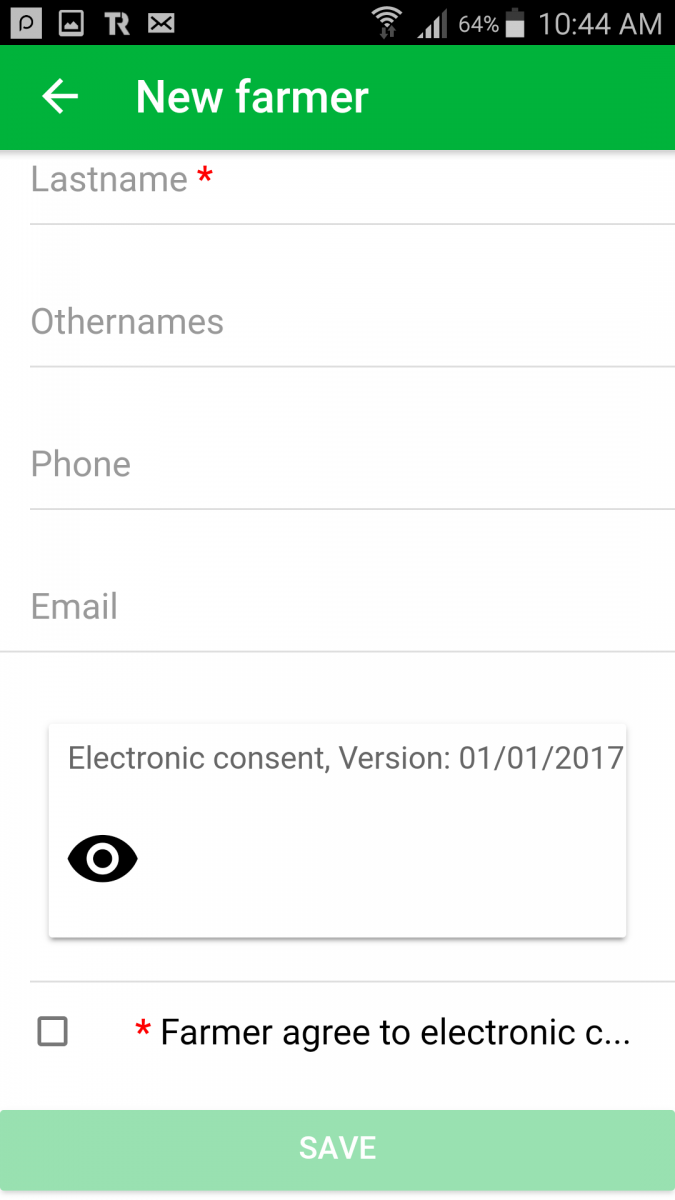
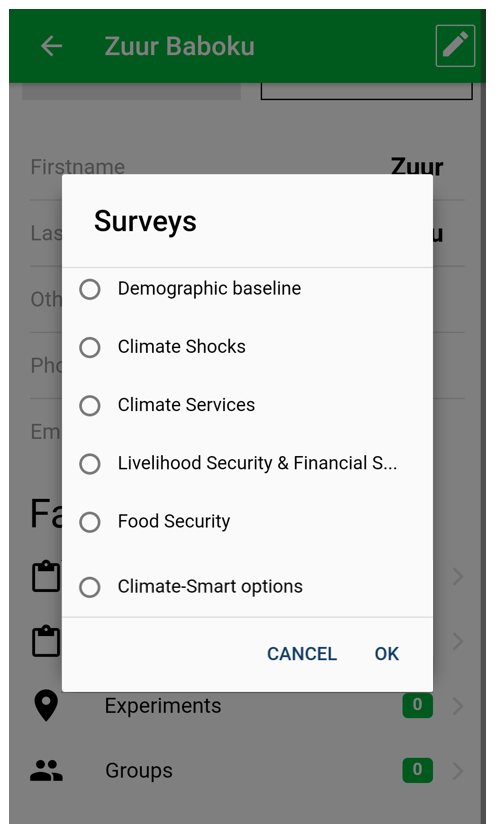
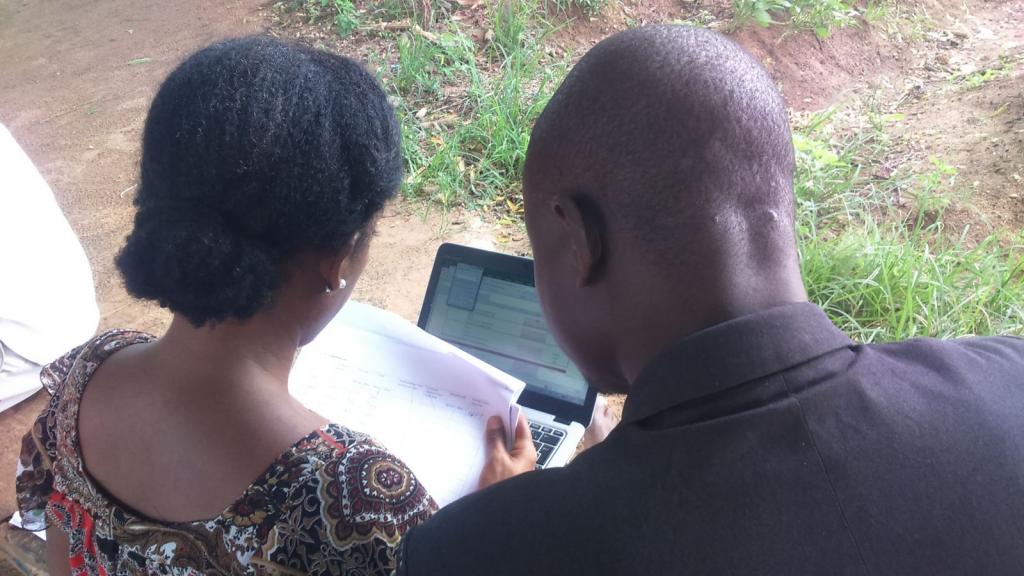
Baazu testing CSV farm level monitoring tool. Photo: Osana Bonilla Findji (CCAFS)
After the 13,000 kilometers journey and a good night's rest, the Colombia team joined forces with local CSIR-SARI partners led by Dr. Saaka Buah organized a half-day training on the use and implementation of this new Smart Monitoring system. Six local enumerators that would interview men/women and youth farmers in 200 households from the 7 Daagari communities belonging to the Lawra-Jirapa CSV site have been chosen. Sampling has been established in order to collect information from approximately the same number of CSA implementing and non-implementing farmers.
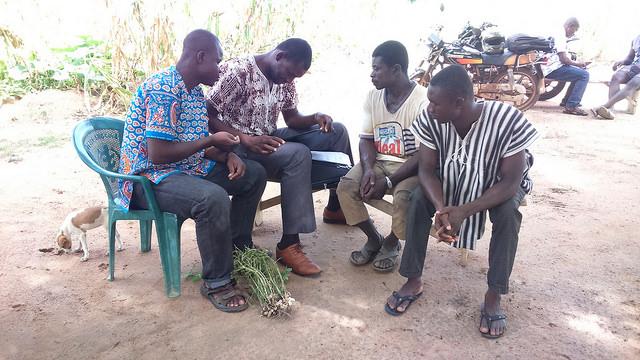
Enumerators surveying Bompari farmers during the Bompari monitoring pilot. Photo: Osana Bonilla Findji (CCAFS)
A one-day pre-testing was held in the Bompari community with both the group of farmers familiar with the CSV activities and the group of 7 enumerators composed of Anslem, Ibrahim, Mavis, Bawa, Stephen, Peter, and David. They learned fast the specificities of the questions and the ICT-based application. The coming and crucial step was to attend the introductory meeting with the Doggoh and Bompari enlarged communities and their chiefs.
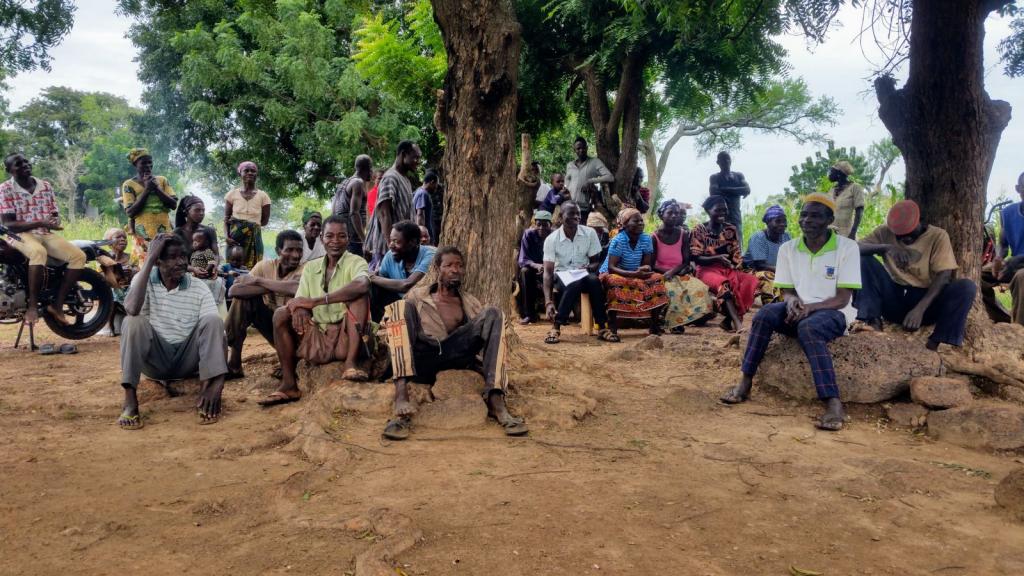
Doggoh enlarged community meeting. Photo: Anton Eitzinger
Ultimately, enriched with blessings from their elders, the enumerators took their motorbikes and started the survey trip in the area while the rest of the team was visiting some farms. One of those farms belongs to Zuur Dongdeme, who proudly mentioned his participation in a Farms of the Future exchange to Burkina Faso a few years ago, and how, since then, he has introduced new varieties of maize, improved practices and innovated recently with the “grasscutters” raising.
Learnings and key figures
After overcoming some technical challenges mainly related to the lack of a stable internet access which is required for the automatic submission of the daily collected data to the global database, this first piloting exercise ended up being smooth and successful. A key recommendation mentioned for future implementations was the identification of the best time of the year to carry this out: the ideal period should correspond to a period when farmers are not involved in intensive activities (e.g harvesting) and be close to the more critical months in terms of food security.
No doubt one of the major assets of the pilot had been the selection of a knowledgeable local team of enumerators, deeply familiar with both CCAFS work in the area and the CSV farmers themselves. The strong point enabled them to be a perfect bridge for ensuring “life translation” of the survey questions beyond merely linguistic aspects.
Some key figures coming out of this exercise:
- Total # of enumerators: 6
- Total # of sampling days: 11
- Average number of surveys per day/enumerator: 4 to 5
- Total sampling achieved: 195 Households and 357 farmers (189 men and 168 women; including 130 youth under the age of 35)
- Survey time per farmer: 38 to 50 min (for CSA implementing farmers) and 25 to 35 min (for non-implementing farmers)
- Average survey time for the “CSA options” module: 25 to 29 minutes (for implementers) and 18-23 minutes (for non-implementers).
Data analysis over the coming weeks will inform the design phase of the Analytical module to be integrated into the CSV Smart Monitoring Application (an effort to be undertaken in 2018).
Stay tuned for more updates on the results that will reveal this CSV Monitoring!
Lessons from this piloting will be included in the Training and Implementation Guide already developed and yet to be shared with the wide CSV community worldwide in regards to a future implementation in the other CCAFS regions.
Look at the monitoring pilot photo album
Learn more:
- Activity Report: Supervisory report on CSV Monitoring Plan in the Lawra-Jirapa Climate-Smart Villages
- Publication: Tillage and fertilizer effect on maize and soybean yields in the Guinea savanna zone of Ghana
- CCAFS blog: Dery Christopher: How the Climate-Smart Village approach changed my life
- CCAFS blog: How the Climate-Smart Village approach impacts farmers' livelihoods in Ghana
- CCAFS blog: Better decision support for improved livelihoods among farmers in northern Ghana
- CCAFS blog: How mobile phone help northern Ghana's farming families beat climate change
- Publication: Inventory of CSA practices in Climate-Smart Villages
- Video: Stories From Upper West: Sharing impacts from the Climate Change, Agriculture and Food Security programme, Ghana
Osana is the Science Officer for the CCAFS Flagship 2: Climate Smart Technologies and practices at CIAT
Mathieu Ouédraogo is a Scientist working on participatory action research at CCAFS/ICRISAT Mali
Nadine Andrieu is a Research scientist in Farming System Analysis and Modelling at CIAT/CIRAD
Anton Eitzinger is a Climate Change Scientist at the Decision and Policy Analysis Research Area, International Center for Tropical Agriculture (CIAT).
The story was edited by Dansira Dembélé Communication Assistant, CCAFS West Africa.



